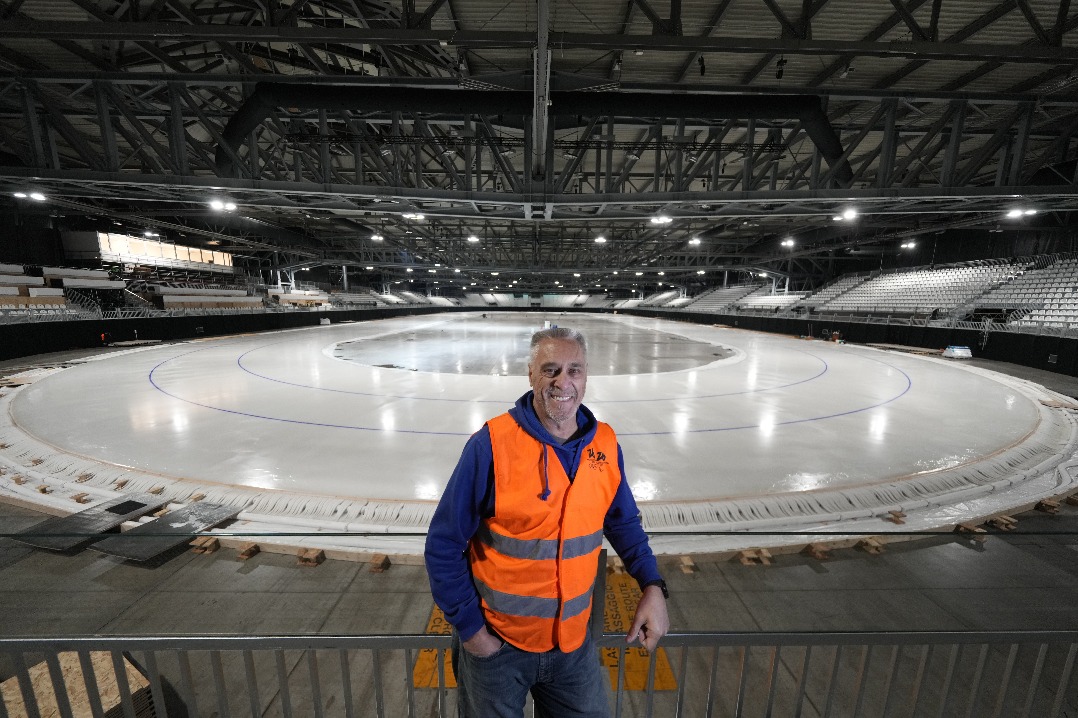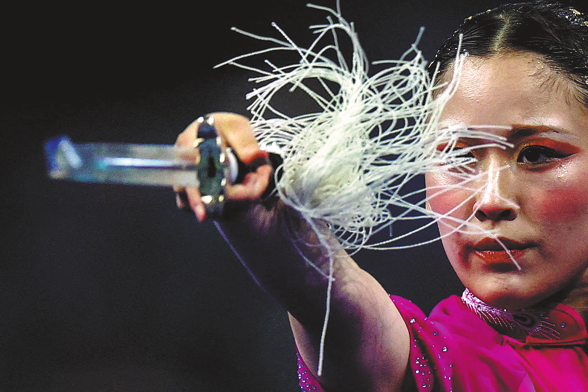The soccer fans who refused to be beaten


To most sports fans, the name Wimbledon means tennis, and one of the game's most famous venues. But the story of Wimbledon's soccer teams is as dramatic as anything served up on Centre Court.
In the 1980s, Wimbledon FC enjoyed an unparalleled rise to the heights of English soccer, but it was followed by a painful fall to homelessness and obscurity. Then, from the depths, a revival as AFC Wimbledon, another rocket-like ascent, and now a return home.
With a new team at a brand new stadium just meters from the old one, the club is entirely fan-owned, has been honored by the government for its community work, and has supporters who have fed local families during the pandemic through a food parcel distribution program. The club that would not die is back where it belongs, as the beating heart of its community.
In 1978, Wimbledon FC entered the bottom tier of the English Football League, and within nine years, despite playing at the dilapidated Plough Lane stadium in front of small crowds, the rough-and-ready outsiders known as the Crazy Gang rose to the top tier, then called Division One.
In 1988, Wimbledon pulled off the biggest-ever upset in FA Cup history, beating one of the all-time greatest Liverpool sides 1-0 in the final. They had conquered soccer's highest peak in record time-but the thin air at the summit would prove their downfall.
After the Hillsborough Stadium disaster of 1989, which saw 96 Liverpool fans crushed to death, English soccer went through a complete transformation, with stadium safety the top priority. The outdated Plough Lane was history, and cut off from its roots, soon, so too was the team that played there.
In 1991, Wimbledon was forced to move out and after 10 years as lodgers at nearby Crystal Palace, in 2001, to the outrage of fans across the soccer spectrum that still lingers to this day, the club's new owners proposed relocating it 96 kilometers to Milton Keynes, a move unprecedented in the modern era. A year later, the Football Association, or FA, approved the move, and the club was renamed, rebranded and re-launched.
Wimbledon FC was dead. But a new story was just beginning. In 2002, despite the FA saying it was "not in the wider interest of football", fans launched a new team, AFC Wimbledon, with open public trials on Wimbledon Common. The new club had a near-identical badge and wore the same colors as Wimbledon FC but, crucially, was fan-owned.
During the next nine years, the new team won five promotions to re-enter the English Football League, and a further nine years on, the club, now in League One, is moving to a brand new stadium on Plough Lane, a short walk from the housing development that stands where the old stadium was.
On Nov 3, 29 and a half years after the old Wimbledon played their final game at the old Plough Lane, the new Wimbledon will play Doncaster Rovers in the first game at the new Plough Lane. Behind closed doors.
"You couldn't write a script like this, could you?" said Ivor Hellar, one of AFC Wimbledon's founders, and now its commercial director. "We've been in the wilderness for 30 years, finally found our way back to the promised land-and thanks to COVID-19, the doors are locked.
"Fans worldwide will be able to watch online through the ifollow platform, though, and just to hear the words 'back at Plough Lane' being said, and to know it's happening, will be very emotional."
But it is not just on the pitch where the club has made headlines. During lockdown, the community element of its founding spirit has come to the fore, with more than 1,500 fans mobilizing to help their neighbors.
Between March and September, a group called the Dons Local Action Group delivered more than 35,000 weekly food parcels to local families, largely collected from donations at supermarkets, more than 87,000 food parcels for charities and community groups, and supplied more than 800 laptops and tablets to schools in the area to help children keep learning when schools were shut.
"There's always been a pioneering spirit round AFC Wimbledon," said Hellar. "When we set it up, we didn't know what we were doing, but we did have common sense, and that can get you very far.
"It's the same with what the fans have done here. The overarching spirit and the organization of the club helped, but this came from our fans, who decided they wanted to do something to make a difference. We're so proud of what they've done."
Born out of fury and injustice, AFC Wimbledon's road home has been a long one, but journey's end will only be the closure of a chapter, and the start of another.
"Righteous indignation is an incredibly powerful emotion," said Hellar. "It has fueled this club from May 28, 2002, when the move away was approved.
"People said fans couldn't run a club, but we did. Then they told us fans would never get a club into the league, and we did. Then they said fans could never build a stadium, and we did. So now what? Who's going to tell us what we can't do now?"
Most Popular
- China reaches knockout stage for first time in AFC U23 Asian Cup
- China ties Iraq 0-0 in its U23 Asian Cup opening match
- A learning curve
- Russian team wins Harbin International Ice Sculpture Competition
- Worldloppet ski season opens with Changchun cross-country event
- Women's half-marathon draws 20,000 runners to Guangzhou





























